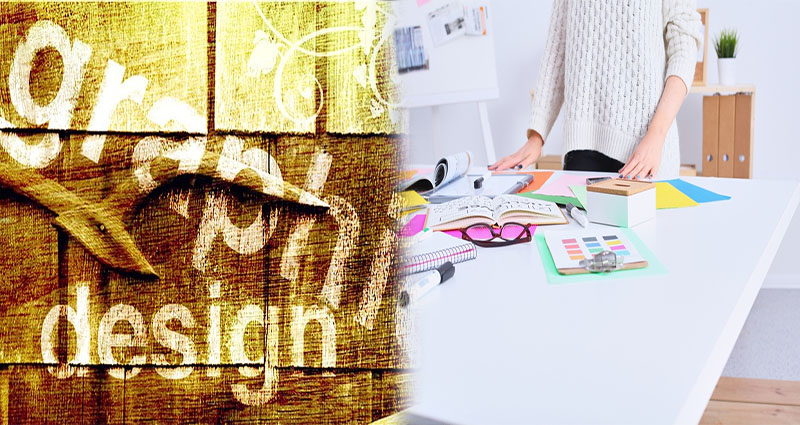In this day and age, graphic design is not just a job title; it’s an art form. And like any other art form, it takes years of practice to perfect your craft. The good news is that there are plenty of courses available online and in-person across the world where you can learn how to become a better graphic designer. If you’re interested in taking on this career path or just want to improve upon your existing skillset, here are some courses that will help you along the way:
Watercolor Illustration
Watercolor illustration is a style that uses watercolors and other materials to create images. Watercolor illustrations are usually made up of just a few colors, with the artist using their brush and paint to create the image they want.
Watercolor illustrations can be used in magazines or on posters, but they’re most often seen in children’s books because they’re easy for kids to understand and enjoy looking at. They often have bright colors and simple shapes that tell an engaging story without being too complex for children’s minds to grasp quickly enough–which makes them great educational tools!
Adobe Illustrator
Illustrator is a vector graphics editor that can be used to create logos, banners, illustrations and other graphics. It is used by professional designers to create graphics for print, web and video.
Illustrator can also be used to create fonts by using Typekit (a paid service).
Photoshop
Photoshop is a software used for photo editing. It’s one of the most popular and widely used graphic design programs in the world, and it can be used for many purposes.
It’s not just about getting your photos into perfect shape; you will also learn how to make them look real with Photoshop! You can create stunning 3D effects, add text effects, make your images look like paintings or sketches on canvas…the possibilities are endless!
InDesign Layout Designing & Printing
InDesign is a layout and design program that allows you to create layouts for print and digital media. It’s used by graphic designers, artists and other professionals who need to produce high-quality documents on a regular basis.
InDesign is part of Adobe’s Creative Cloud suite of software applications, which includes Photoshop, Illustrator and others. InDesign was originally developed by Aldus Corporation in 1988 as PageMaker 6; it was then acquired by Macromedia in 1994 when they purchased Aldus. After acquiring Macromedia in 2005 (which included PageMaker), Adobe renamed the product “Adobe InDesign CS” before releasing version 5 later that same year with new features such as color management support
Typography
- Typesetting: The arrangement of text in a document.
- Typographic color: The use of different colors to indicate the importance, meaning or tone of the words being used.
- Typographic hierarchy: The order in which items are given focus by the reader’s eyes when they look at your design (for example, headings are often larger than regular text).
- Typographic scale: How big or small something is compared to its surrounding elements (such as body text). This can vary from font size and line height up through things like icon sizes on buttons or links within navigation elements. It can also be used as an element itself; for example if you want something like “Visit our website” or “Get in touch today” stand out from other content on your page then you may choose not just any old font but one that has been designed specifically for this purpose–like perhaps Helvetica Neue Bold Extended!
The trick here is knowing exactly what kind of message each part needs sending before choosing which style suits best; if we keep going back down our list above we’ll find ourselves coming across some great tips on how best ensure success here too…
Print Designing & Lettering
- Print Designing & Lettering
- Lettering is a form of graphic design that uses text as the main element. It can be used as an artistic medium or to create logos, signage and other designs with words.
In this course, you’ll learn how to improve your lettering skills by mastering different styles and techniques for creating attractive designs using fonts that are easy on the eyes. You’ll also get tips on how to use typography effectively in print media such as flyers or brochures so that they look professional despite being simple overall in terms of visual appeal.
It doesn’t matter what your skill-level is, there’s always something to learn
It doesn’t matter what your skill-level is, there’s always something to learn. Even if you’re a seasoned professional with years of experience under your belt, there’s always something new that could help improve your skills and take them to the next level.
As a graphic designer, it’s important for me to stay up-to-date on trends in the industry and keep learning new things daily. This helps me create better work for my clients as well as improve upon my own personal style and technique. I’ve found that when I’m not actively learning new things about design or technology (or both), I tend not only become bored with my work but also get complacent with what I know already–and this leads directly towards stagnation!
Learning the art of graphic design is a rewarding experience, but it’s also one that takes time and effort. The best way to get started is by taking classes that teach you the basics of each skill before moving onto more advanced topics like typography or layout design. With these courses available online from Udemy, there’s no reason why anyone should feel intimidated about starting their own course today!











